Reverberation time sound level meter Larson Davis 831C-RT
Price: Contact
| Model | 831C-RT |
| Manufacturer | LARSON DAVIS (a part of the PCB PIEZOTRONICS) |
| Power supply | N/A |
| Weight | N/A |
| Size | N/A |
| Condition | Stocking |
| Warranty | 12 months |
Reverberation time sound level meter Larson Davis 831C-RT designed with simplicity in mind, offers reverberation time measurement tools compliant with the latest measurement standards for measurement of room acoustics, including ISO 3382-1, ISO 3382-2 and ASTM E2235-04.
I. Specification of Reverberation time noise level meter Larson Davis 831C-RT
MEASURE RT60 ROOM ACOUSTIC PARAMETERS
Whether for performance venues, architectural measurements, or work-place acoustics, reverberation time is a key parameter for characterizing a room. Reverberation time data provides information about the quality of sound as perceived by the audience in a room. A long reverberation time can make speech less intelligible, and music more pleasing. Too short a reverberation time can muffle speech and make a room sound “thin.” Reverberation time sound level meter Larson Davis 831C-RT with Room Acoustics Firmware 831C-RA offers reverberation time measurement and calculation.
Reverberation time is a key parameter for characterizing the acoustic nature of a room. Reverberation time is defined as the time after the source of the sound has ceased that it takes the sound to fade away. The optimum reverberation time for a space depends on the space’s use, with longer reverberation time considered better for music and a shorter better for understanding speech.
HIGHLIGHTS
- Calculates reverberation time (RT60)
- Ensures measurement reliability with ensemble averaging
- Serves as a pink and white noise source
- Supports optional amplifiers and omnidirectional or façade speakers
- Triggers measurements automatically
- Provides 1/1 and 1/3 octave filters for computation of reverberation time
- Offers measurement quality indicators and grading according to ISO standards.
APPLICATIONS
- Architectural acoustics
- Room acoustics
- Acoustic absorption materials testing
- Reverberation time
- Performance space acoustics
- Classroom acoustics.
II. Simplify measurements with software solutions on the Reverberation time sound level meter Larson Davis 831C-RT
Manage measurement setup to results reporting with the powerful G4 LD Utility Software.
- View individual decays or ensemble averages
- Identify and exclude questionable decays from final results
- Easily create and share reports.
Use the included G4 LD Software to visualize reverberation time and room acoustics data. Easily export data to create shareable reports. Measurements are reviewed quickly and easily to identify any questionable decays and exclude them from the final results. RT60 decay times are displayed using both the T20 and T30 computation methods, and reporting includes associated quality indicators.

Want to be more mobile? Wirelessly control reverberation time measurements and view real time results using the LD Atlas app, available for Android and iOS.
Already own a SoundAdvisor Sound Level Meter or System? Add room acoustic tools to your Sound Level Meter without returning it to the factory by adding Model 831C-RA Firmware. Contact our team to learn more.
|
RT60 Decay Curve Display
|
Room Acoustics Quality Indicators
|
Built-In Noise Source
|
|
|
|
|
III. Understanding reverberation time | Understanding RT60 in Room Acoustics
WHAT IS REVERBERATION TIME?
We know that sound consists of pressure waves, so it makes sense that in a room sound bounces around. Sound waves can bounce off the floor, walls, ceiling, and any other reflective surface; gradually losing energy over time. Reverberation is the collection of the reflected sounds. Reverberation time is the time after the source of the sound has ceased that it takes the sound to fade away.
How can we make objective measurements of reverberation? We use the metric Reverberation Time 60 (RT60). RT60 is defined as the measure of the time after the sound source ceases that it takes for the sound pressure level to reduce by 60 dB.
Why 60 dB? That seems like a somewhat arbitrary number, but here's one way to think of it: the loudest sound level in orchestral music is typically 100 dB, while 40 dB is a reasonable background noise level for listening to music. So, RT60 measures the time it takes for the loudest noise in a concert hall to fade to the background level. Or, as the website HyperPhysics*, from Georgia State University, puts it, "60 dB is a typical range of dynamic levels for orchestral music. It is also important to note that reverberation time in a particular space varies with the frequency of the sound source.
WHAT'S THE OPTIMUM RT60 FOR A ROOM?
This question is more complicated than you might think. The optimum RT60 depends on the use of the room. There is a "sweet spot" for RT60. It can be too high (generally, > 2 seconds), and the room is considered "echoic." It can be too low (< 0.3 seconds), and the room is called acoustically dead. Sometimes the term "live" is used to describe a room with a longer reverberation time.
It's important to consider what the room will be used for!
- RT60 < 1 s: Good for classrooms.
- RT60 = 1 s: Good for speaking: articulation of speech is clear. Music doesn’t sound full, rich, or warm at this level.
- RT60= 1.5 s to 2.5 s: A good compromise if the room is to be used for both speaking and music.
- RT60 = 3.5 s: Better for music, but some loss of articulation. Would likely be difficult to understand speech.
- RT60 = 8 s to 11 s: Large medieval cathedrals will have a very long RT60! This is by design as the long reverberation time is well suited to organ music or the unaccompanied voice (for example, Gregorian chants). Measurements made at St. Paul’s Cathedral in London, England indicated that with the cathedral empty, the reverberation time at 500 Hz was 11 s. When the cathedral was full, the reverberation time was 7.8 s.
HOW CAN YOU REDUCE RT60?
Smooth surfaces cause sound waves to bounce around, so include soft, absorptive surfaces in the room. Smaller rooms lead to shorter reverberation times.
HOW IS RT60 MEASURED?
In order to measure RT60, the room must first be energized with noise. This can be done by popping a balloon or using a dodecahedral speaker or other Sound source. A sound level meter with special room acoustics options measures the time for the sound level to decay and reports the result.
It can be difficult to put enough sound into a room to fully measure RT60 directly, so we often extrapolate it using just a portion of the decay. If the time for the sound pressure level to decay by 20 dB is measured and multiplied by 3, we call our reverberation time a T20 measurement. If we measure the time for the sound pressure level to decay by 30 dB and multiply by 2, this is called a T30 measurement. In both cases, the measurement is begun after the first 5 dB of decay.
Example of Reverberation Time T20
RT60 = ( time to decay 20 dB ) * 3 = ( 0.56 s * 3 ) = 1.68 s

Example of Reverberation Time T30
RT60 = ( time to decay 30 dB ) * 2 = ( 0.83 s * 2 ) = 1.66 s

In this example, Reverb Time T20 (1.68 s) and Reverb Time T30 (1.66 s) are a good match!
MULTIPLE SAMPLES AND AVERAGING
Based upon the size of a room, standing waves will occur at certain frequencies. When there is a standing wave, there is maximum pressure at an anti-node and no pressure variation at a node. In order to account for this, the best practice is to measure at several different positions in the room and/or with the sound source at several different locations.
Once multiple measurements have been made, results should be averaged. There are two ways to average RT60 measurements:
- Arithmetically average the reverberation times
- Average the decay curves then compute the RT60 from the averaged decay. This is known as ensemble averaging, and it is considered a better method than arithmetic averaging. Instruments such as the Model 831C Sound Level Meter perform this operation internally.
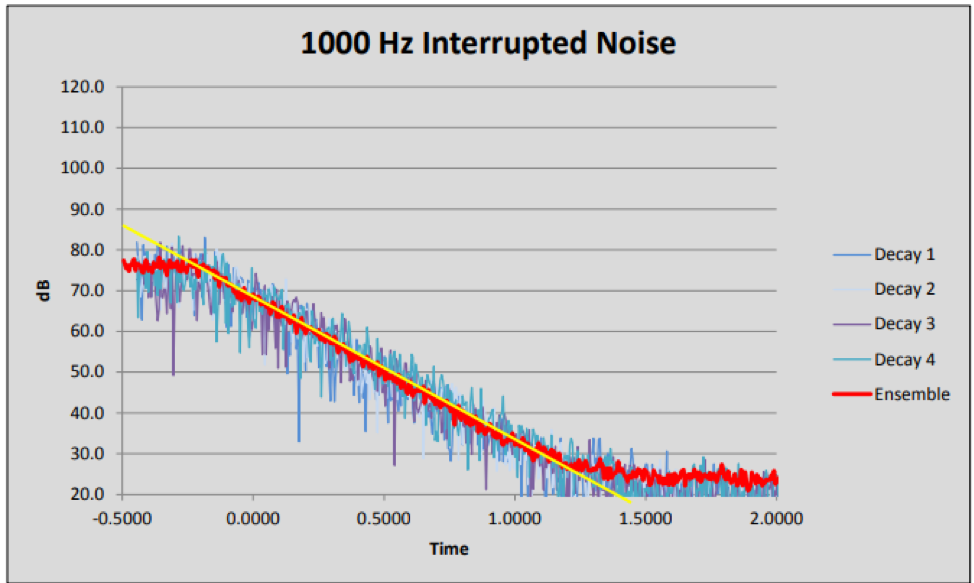
Example of ensemble averaging of four separate measurements.
HOW DO I KNOW WHETHER TO USE T20 OR T30?
Consider the range!
- When the Maximum sound level is greater than or equal to 35 dB higher than the background noise level, T20 is an appropriate way to measure reverberation time.
- When the maximum sound level is greater than or equal to 45 dB higher than the background noise level, T30 is an appropriate way to measure reverberation time.

In this example decay, the maximum sound level (or the level of the sound we introduced into the room) is approximately 78 dB, and the background sound level of the room is approximately 24 dB. Since the difference between the maximum and background levels is > 45 dB, T30 can be used to calculate RT60.
WHAT INSTRUMENTATION DO YOU NEED TO MEASURE REVERBERATION TIME?
Sound Level Meter with Room Acoustics Firmware (831C-RT)
Sound source (preferably omnidirectional) (BAS001)
Software to create reports that are compliant with international standards such as ISO 3382-1 (performance), ISO 3382-2 (ordinary), ISO 3382-3 (for open plan offices), and ASTM E2235 standard (G4 Utility).
Technical specifications of Reverberation time sound level meter Larson Davis 831C-RT
831C-RT Complies with the Following Standards |
|
|
ISO 3382-1:2009 |
Acoustics — Measurement of room acoustic parameters — Part 1: Performance spaces |
|
ISO 3382-2:2008 |
Acoustics — Measurement of room acoustic parameters — Part 2: Reverberation time in ordinary rooms |
|
ASTM E2235-04 |
Standard Test Method for Determination of Decay Rates for Use in Sound Insulation Test Methods |
|
IEC 61672-1:2002 |
Class 1 Electroacoustics – Sound level meters |
|
IEC 61260-1:2003 |
Class 0 Electroacoustics – Octave-band and fractional-octave-band filters |
Reverberation Time |
|
|
Calculation Methods Available |
Impulse excitation using reverse time integration (Schroeder method) |
|
T20 and T30 slope calculation |
Least squares estimation |
|
1/1 octave band |
63Hz to 8 000 Hz |
|
1/3 octave band |
50 Hz to 10 000 Hz |
|
Selectable bandwidth |
(1/1 or 1/3 octave) and selectable frequency range |
|
Trigger bandwidth and level |
Selectable |
|
Programmable exit time |
0 to 99 seconds |
|
Programmable build time (interrupted noise method) |
0 to 19 seconds |
|
Programmable acquisition time |
2 to 9 seconds |
|
Sampling time |
2.5, 5, 10, or 20 milliseconds |
|
Reverberation time |
As large as 33 s (19 s acquisition window, with 20 ms sample time) |
|
Measurement state |
Exit, background, pretrigger, ready, triggered, done |
|
Decay viewing |
Ensemble and individual |
|
Predefined setups available |
Impulse and interrupted noise methods |
|
Data viewing options |
Decay exclude and include |
|
Reverberation time spectra |
T20 and T30 |
Quality Indicators to ISO 3382-2 |
|
|
Measured parameters |
Curvature, standard deviation, non-linearity, BT check, and SNR-background |
|
Quality indicator options |
Ensemble or individual decay |
|
Uncertainty grade indicator |
Survey, engineering, or precision |
On-board Signal Generator |
|
|
Noise generation |
Pink or white noise with 0 to 50 dB attenuation in 3 dB steps |
|
Generator output |
2.5 mm jack |
|
Preview mode |
Measurement controlled or manual |
Data Management |
|
|
Storage of data on SoundAdvisor™ with or without individual decays |
|
|
Data export to SLM Utility Software, MS Excel, DNA, and Larson Davis SDK |
|
Sound Level Meter |
|
|
Requires no other software option |
|
|
Field upgradable |
|
No comments yet
SIGN UP FOR A CONSULTATION
Please fill in the form below and send your comments and questions to GMGA, we will respond to your email as soon as possible.

COMMIT
100% new product

COMMIT
100% refund if the product is of bad quality and not as promised

DELIVERY
Nationwide




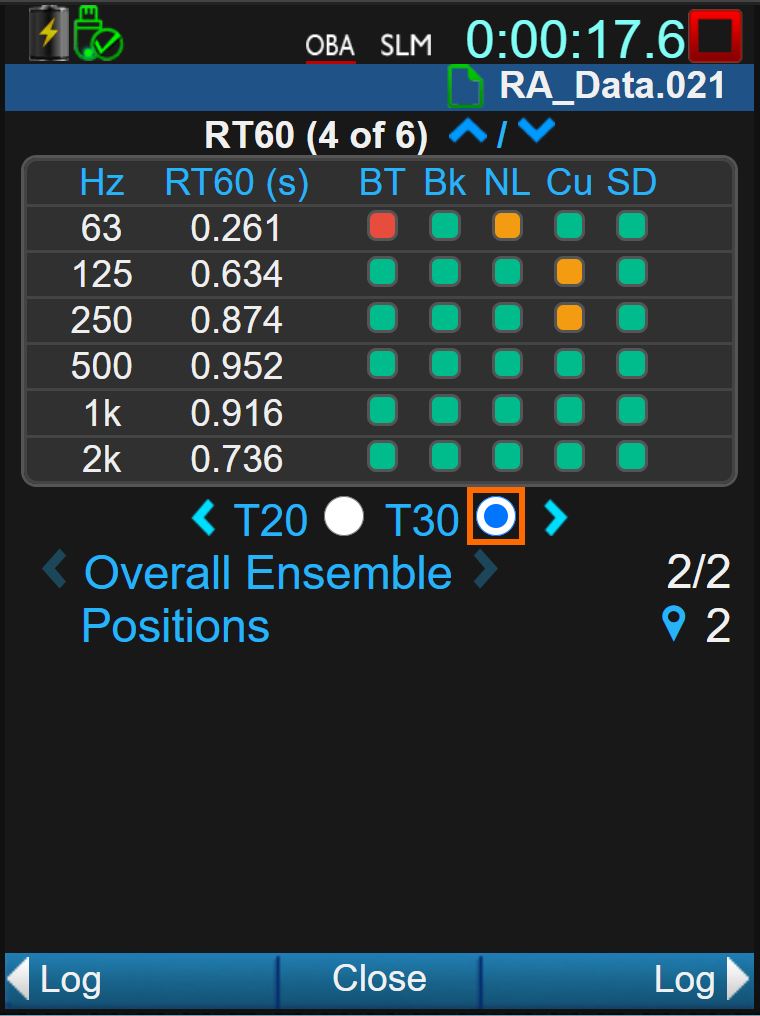
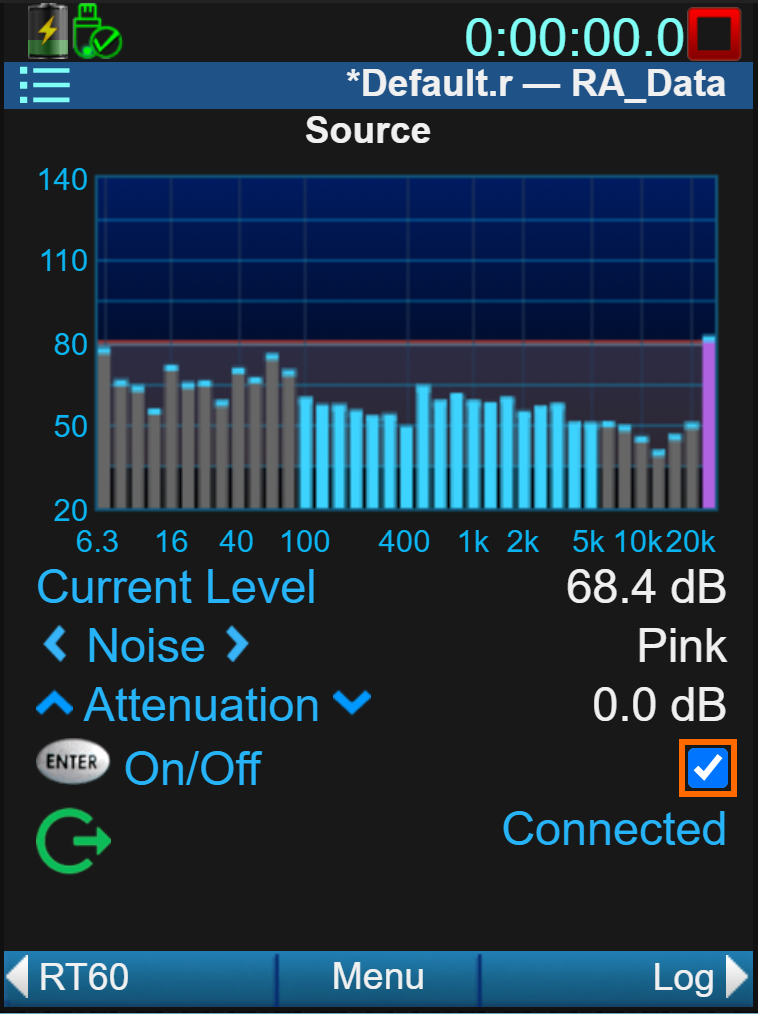

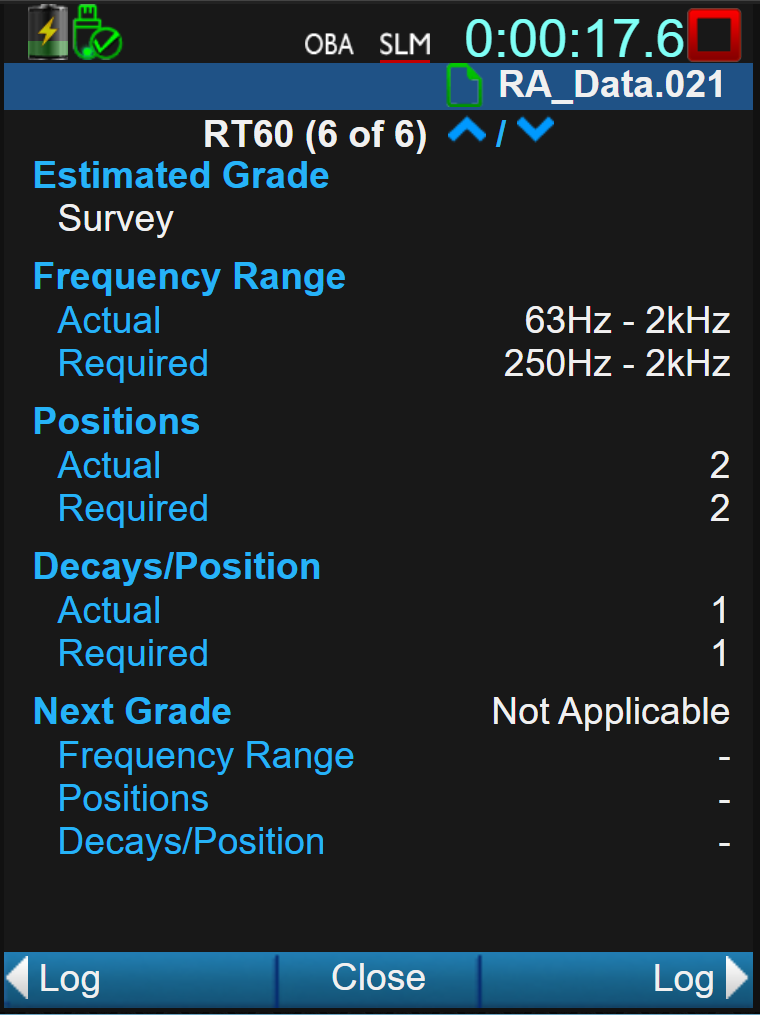
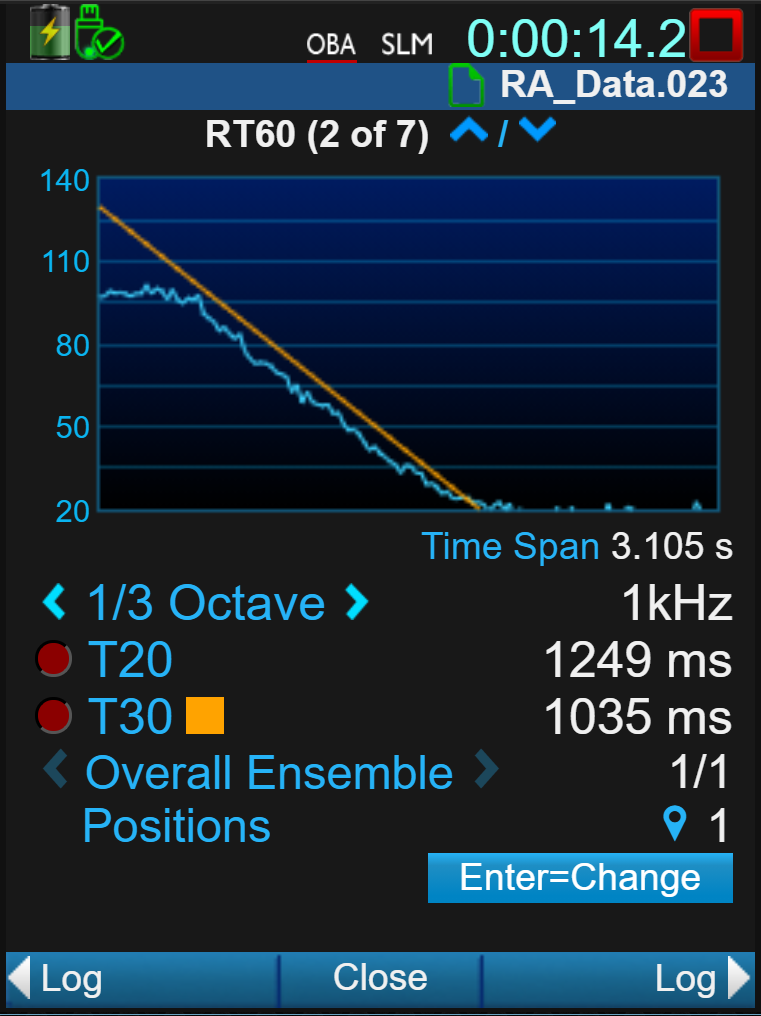

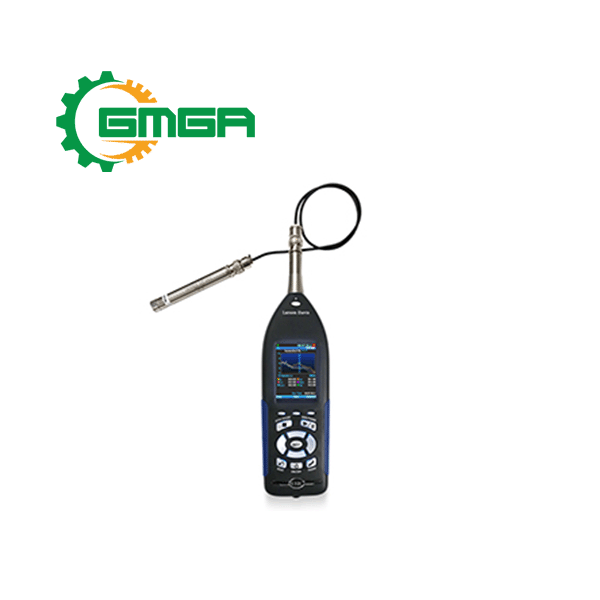
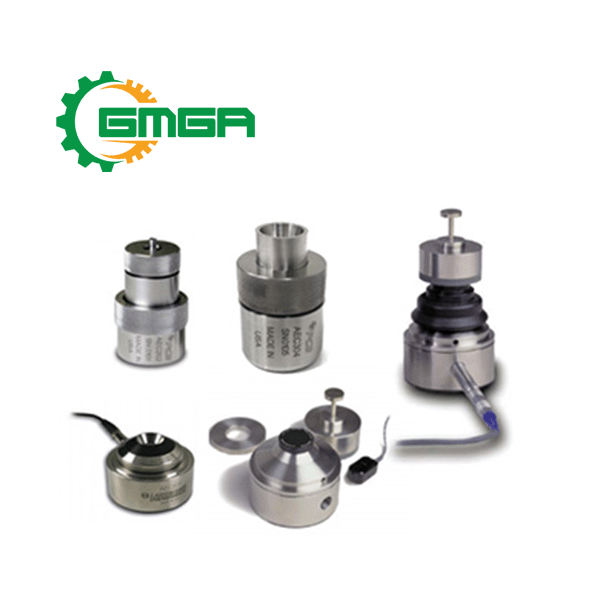
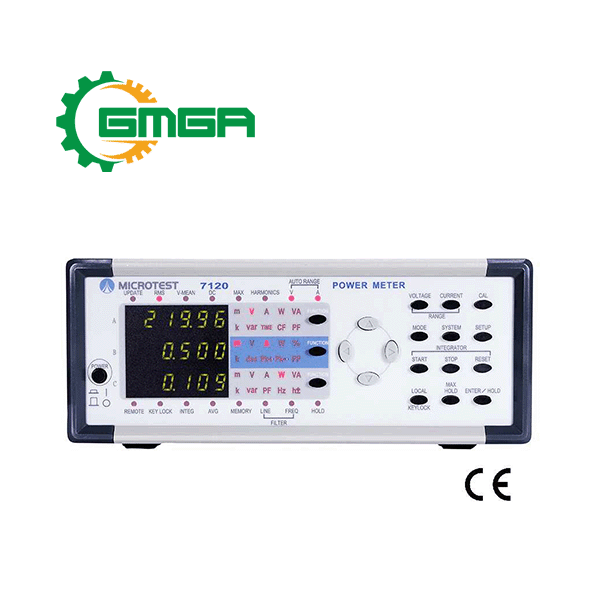
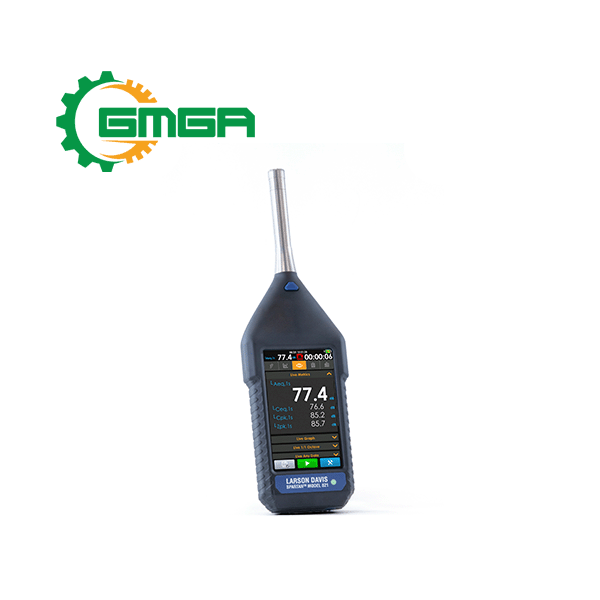

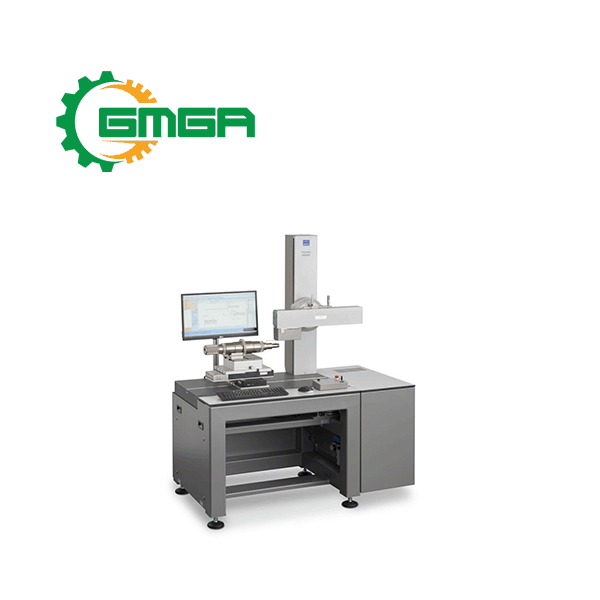
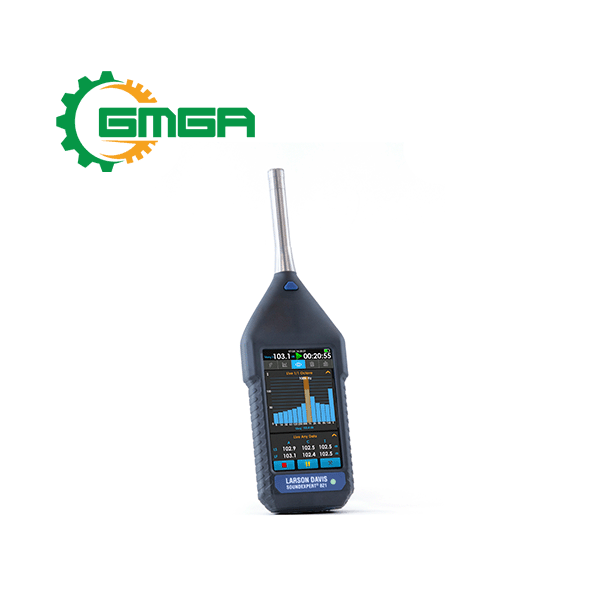

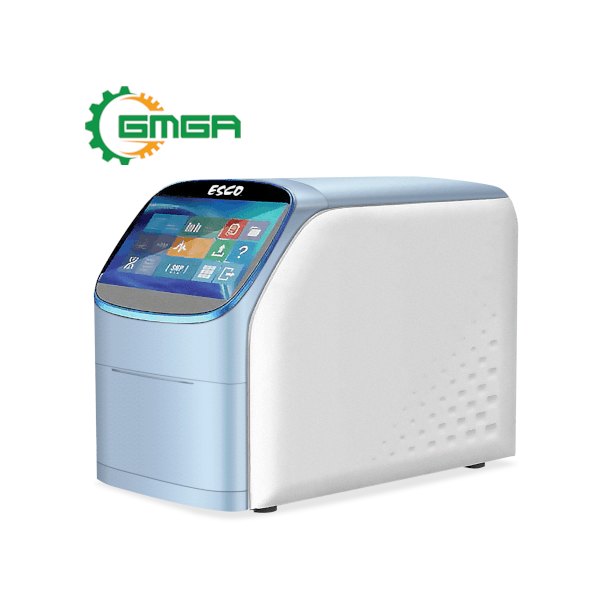
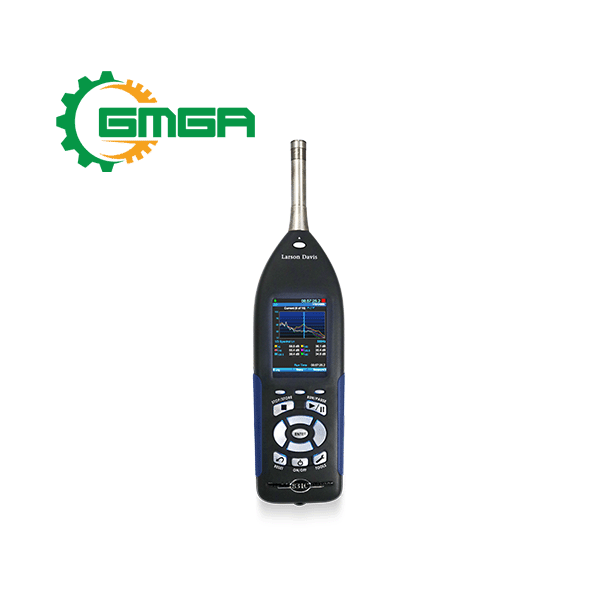
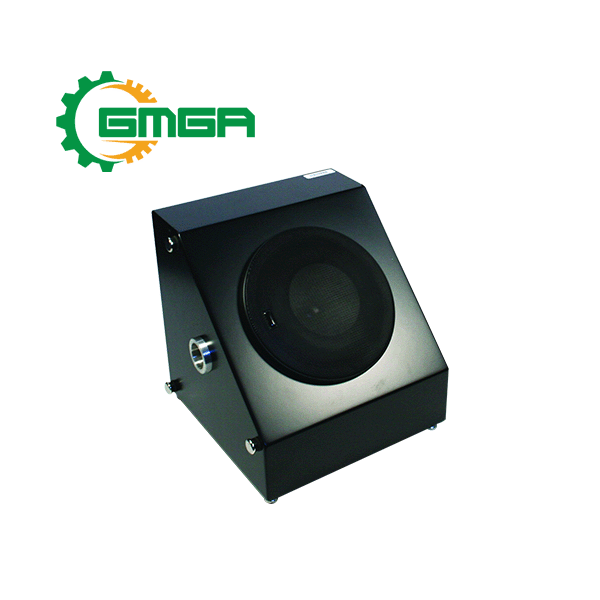
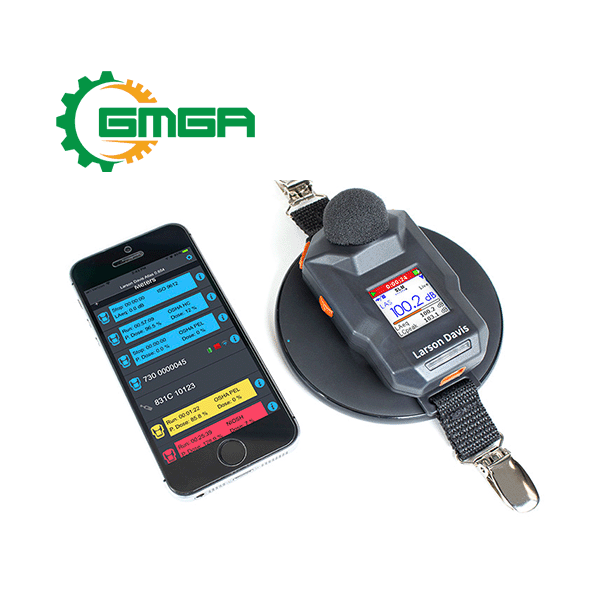
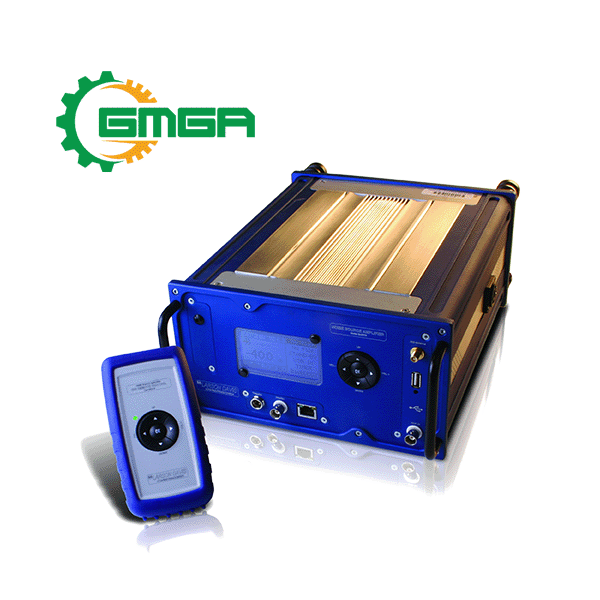


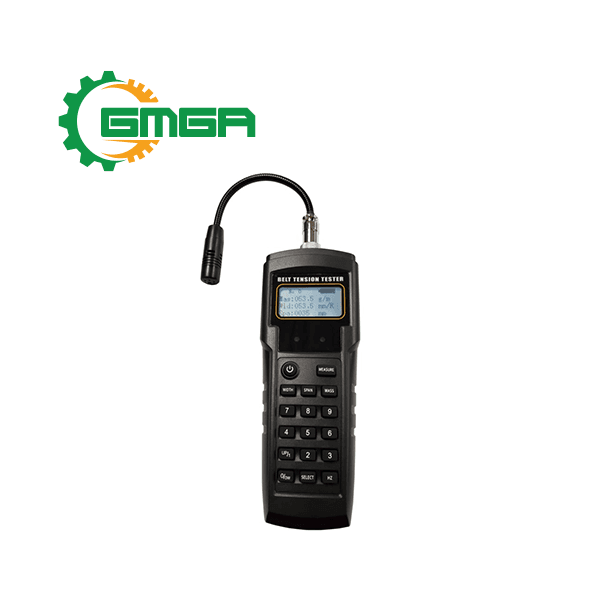

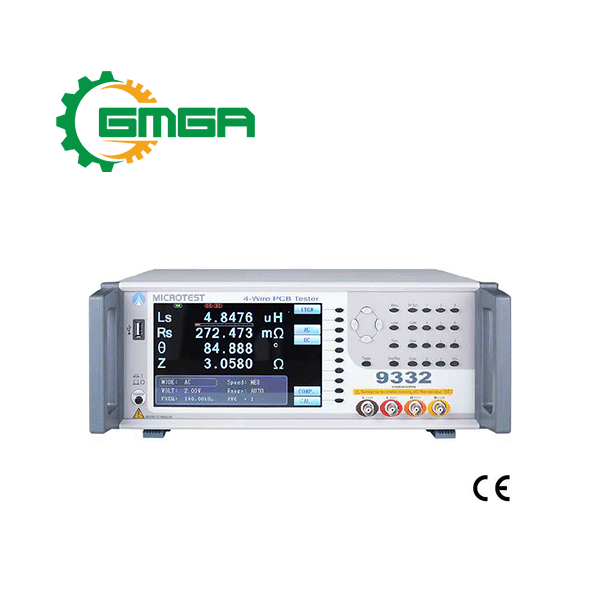
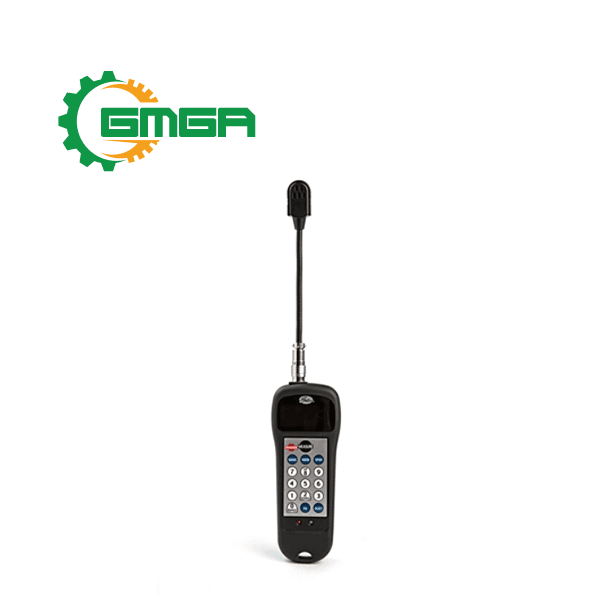
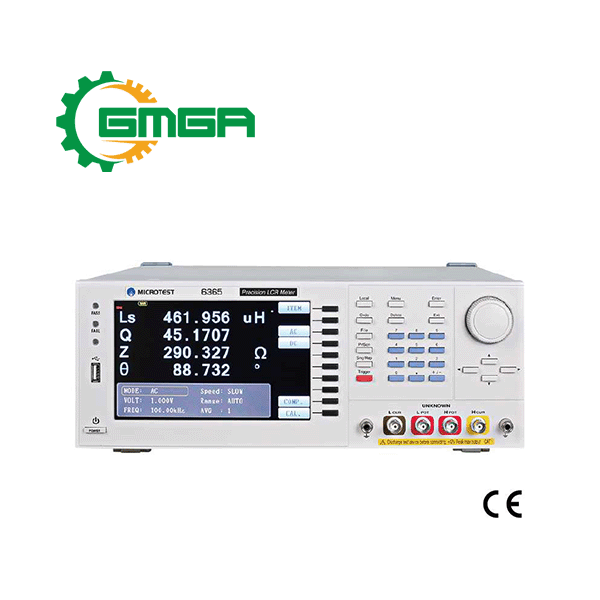

Review Reverberation time sound level meter Larson Davis 831C-RT
There are no reviews yet.